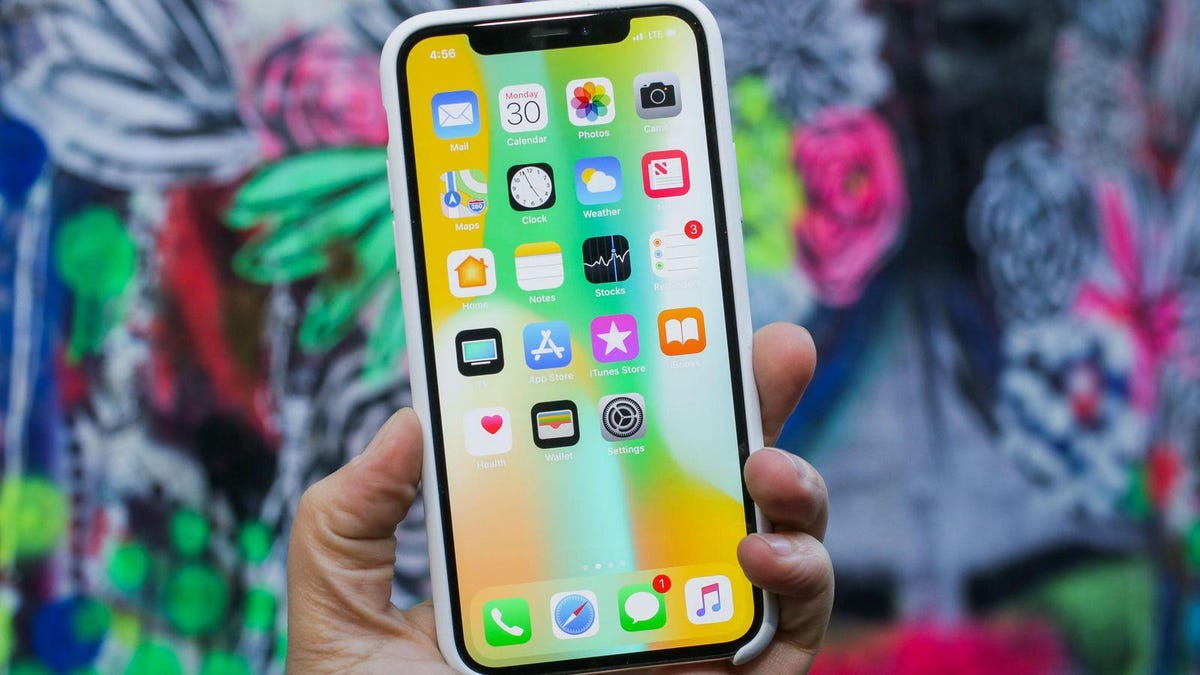7 display settings that can make your iPhone screen clearer
Make your iPhone easier on your eyes.

An iPhone looks pretty good right out of the box, but after you slip it into even the slimmest of cases and start using it under a variety of lighting conditions, the screen and body can lose some of their luster. I can't help you with the case situation, but I can help you improve the look of your iPhone's display.
Here are seven iOS display settings, any one of which can make your iPhone easier on your eyes.
1. Brightness
Let's start with the obvious: brightness. Swipe up from the bottom edge (or down from the top-right corner on an iPhone X) to access the Control Center. Here, you can use the brightness slider to make your display brighter or dimmer.
2. Auto-brightness
You don't have to turn up the brightness every time you step outside and then lower it when you're back indoors. iPhones have an auto-brightness feature that adjusts the brightness of your display based on your current lighting conditions in. It's on by default.
Turning on auto-brightness means you hand over control to iOS so you make fewer trips to the Control Center to adjust your display's brightness. But if you're frequently in brightly lit environments, it jacks up your display brightness frequently. This drains your battery faster.
In iOS 11, Apple moved the location of the auto-brightness setting. It's no longer in the Display & Brightness page in Settings. Instead, you'll need to go to Settings > General > Accessibility > Display Accommodations to find the toggle switch for Auto-Brightness.
3. Reduce White Point
If you're sensitive to bright light, then there's another setting on the Display Accommodations page you might find helpful. Reduce White Point comes in handy if you find yourself reducing the brightness of your iPhone's display until it's so dim it becomes difficult to read. With Reduce White Point, you can reduce the intensity of bright colors without changing the overall brightness of your display. Toggle it on and then you can use a slider to adjust its effect.
4. Night Shift
How did I ever live without Night Shift? It's the best. It shifts the colors of your display to the warmer end of the spectrum during the evening hours. This stops you from staring at a harsh, blue light before bed, which can shift your body's natural clock and make it difficult to get a good night's sleep.
You can schedule Night Shift to come on from sunset to sunrise or schedule it for a certain window of time. And there's a slider to tweak how warm it shifts the colors. You'll find all of Night Shift's settings by going to Settings > Display & Brightness > Night Shift.
You can also manually enable Night Shift from the Control Center by 3D Touching or long-pressing on the brightness slider.
5. Auto-Lock
This display setting is less about how your display and more about finding a balance between convenience and battery life. Powering the display is an iPhone battery's biggest job, so the less time it's lit up, the longer your battery will last. But on the other hand, unlocking your phone constantly can be a pain. With auto-lock, you can set the length of time your iPhone can sit idle before it locks itself and turns the display off. Head to Settings > Display & Brightness > Auto-Lock and to choose a time between 30 seconds and 5 minutes. Or throw caution and battery life to the wind and choose Never.
6. Text Size and Bold Text
I've got a friend of a certain age that says it's not his eyes that are the problem when it comes to being able to read text on his iPhone -- it's just that his arms aren't long enough. For far-sighted folks, there are two settings you can use to make text more legible on the Display & Brightness page in Settings: Text Size and Bold Text. The former lets you use a slider to increase (or decrease, if you have eagle eyes) the size of the text for apps that support Dynamic Type. (And, yes, both the Mail and Messages apps do.) The Bold Text feature requires restarting your phone and makes text more legible by putting it in bold.
7. True Tone
This last one is for people with an iPhone 8 , iPhone 8 Plus or iPhone X. These models feature True Tone, which dynamically adjusts the white balance of your iPhone's display based on your current lighting conditions for more natural and accurate colors. I find its effects to be subtle but pleasing and effective. You can turn on True Tone on the Display & Brightness page in Settings, and you'll also find a button to toggle it on and off by 3D Touching the brightness slider in the Control Center.

